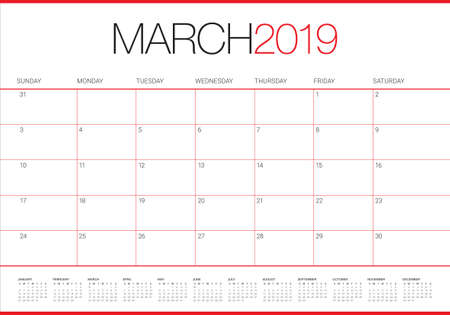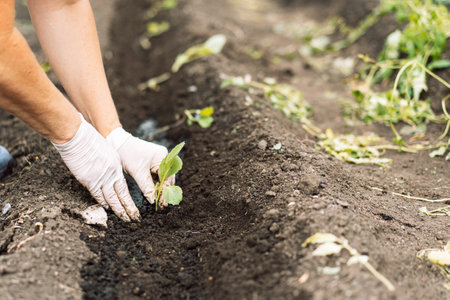1. Understanding USDA Hardiness Zones
Before diving into when and what to plant during spring, its important to understand the USDA Hardiness Zones. These zones are a crucial guide for gardeners across the United States because they help determine which plants are most likely to thrive in specific climates.
What Are USDA Hardiness Zones?
The USDA Hardiness Zone Map divides North America into 13 zones based on the average annual minimum winter temperature. Each zone represents a 10°F range, and some zones are further divided into “a” and “b” categories for more precise temperature differences.
How USDA Zones Are Determined
The U.S. Department of Agriculture (USDA) determines these zones using historical climate data, specifically focusing on the coldest temperatures recorded in each region. This data is updated periodically to reflect changes in climate patterns over time.
USDA Zone Temperature Ranges
| Zone | Temperature Range (°F) |
|---|---|
| 1 | -60 to -50 |
| 2 | -50 to -40 |
| 3 | -40 to -30 |
| 4 | -30 to -20 |
| 5 | -20 to -10 |
| 6 | -10 to 0 |
| 7 | 0 to 10 |
| 8 | 10 to 20 |
| 9 | 20 to 30 |
| 10 | 30 to 40 |
| 11 | 40 to 50 |
| 12 | 50 to 60 |
| 13 | 60 to 70+ |
Why They Matter for Spring Planting
Your local USDA Hardiness Zone helps you choose plants that can survive the lowest temperatures your area typically experiences. In spring, this means knowing when its safe to plant outdoors without risking frost damage. It also guides you in selecting perennials that will come back year after year and annuals that will thrive during the growing season.
Finding Your Zone Made Easy
If youre unsure which zone youre in, the USDA provides an interactive map online where you can enter your ZIP code for accurate results. You can also check local gardening centers or extension offices—they often provide planting calendars tailored to your region.
Understanding your USDA Hardiness Zone is the first step toward a successful and thriving spring garden. It sets the foundation for choosing the right plants and knowing when to get them in the ground. Up next, we’ll dive into how these zones influence specific planting dates throughout the spring season.
2. How to Determine Your Zone
Before you can follow a spring planting calendar tailored to your region, youll need to know your USDA Hardiness Zone. This zone tells you which plants are most likely to thrive in your climate based on average annual minimum winter temperatures. Heres a simple step-by-step guide to help you find your zone.
Step 1: Use Your ZIP Code
The easiest way to find your USDA Hardiness Zone is by using your ZIP code. Visit the official USDA Plant Hardiness Zone Map website or other trusted gardening sites. Most of these websites offer a search tool where you can simply type in your ZIP code and instantly see your zone.
Recommended Tools:
| Tool | Description | Website |
|---|---|---|
| USDA Plant Hardiness Zone Map | Official government map for identifying zones | Visit Site |
| Garden.org Zip Code Lookup | User-friendly interface with additional planting info | Visit Site |
Step 2: Check the Color-Coded Map
If you prefer a visual approach, use the USDA color-coded map. Each color represents a different hardiness zone, and by locating your area on the map, you can determine your zone range. This method is especially helpful if youre on the border between two zones.
Step 3: Use Online Gardening Tools and Apps
There are many apps and websites that not only tell you your hardiness zone but also suggest specific plants and planting dates based on it. Some popular options include:
- Almanac.com Garden Planner
- BHG Garden Planner Tool
- GrowVeg Garden Planner
Step 4: Double-Check If Youre Between Zones
If youre located near a zone boundary or in an area with microclimates (like hills, valleys, or coastal regions), its wise to double-check using more than one method. Knowing if youre in a transition zone can help you choose plants that are more adaptable.
Pro Tip:
If your garden is shaded, exposed to wind, or has unusual soil conditions, consider adjusting your plant choices even within your identified zone.
Once youve identified your USDA Hardiness Zone, youre ready to use a planting calendar customized to your regions growing season. This ensures better timing for sowing seeds and transplanting young plants in spring.

3. Key Spring Planting Dates by Zone
Timing is everything when it comes to planting in spring. Knowing your USDA Hardiness Zone helps you figure out the best time to start planting vegetables, herbs, and flowers in your garden. Below is a helpful breakdown of typical spring planting windows for each zone—from chilly Zone 3 to the much warmer Zone 10. Keep in mind that local microclimates and weather patterns can affect exact timing, so use this as a general guide.
Vegetables, Herbs, and Flowers: Planting Guide by USDA Zone
| USDA Zone | Typical Last Frost Date | When to Start Seeds Indoors | When to Transplant or Direct Sow |
|---|---|---|---|
| Zone 3 | May 15 – June 1 | 6–8 weeks before last frost (early March) | Late May to early June |
| Zone 4 | May 1 – May 15 | 6–8 weeks before last frost (late February to early March) | Mid to late May |
| Zone 5 | April 15 – May 1 | 6–8 weeks before last frost (mid-February) | Late April to early May |
| Zone 6 | April 1 – April 15 | 6–8 weeks before last frost (early February) | Mid-April |
| Zone 7 | March 15 – April 1 | 6–8 weeks before last frost (late January) | Late March to early April |
| Zone 8 | March 1 – March 15 | 6–8 weeks before last frost (mid-January) | Mid to late March |
| Zone 9 | February 1 – March 1 | 6–8 weeks before last frost (early January) | Late February to early March |
| Zone 10 | No true frost date (frost is rare) | N/A or December–January for early crops | January through March depending on crop type |
A Few Tips by Category:
Vegetables:
Crops like lettuce, spinach, and peas are cool-season veggies and can be planted just after the last frost. Warm-season vegetables like tomatoes, peppers, and cucumbers need to wait until soil has warmed up.
Herbs:
Basil loves warmth, so plant it after the danger of frost is gone. Hardy herbs like parsley and chives can go in a bit earlier.
Flowers:
Pansies and snapdragons tolerate cooler temperatures and can be planted earlier. Sunflowers and zinnias need warm soil—wait until at least two weeks after the last frost date.
This zone-by-zone guide helps you get a head start on planning your spring garden. Whether youre growing fresh veggies for the table or beautiful blooms for your yard, planting at the right time sets you up for success.
4. Best Plants to Grow in Each Zone
Choosing the right plants for your USDA Hardiness Zone is key to a successful spring garden. Below is a curated list of vegetables, herbs, flowers, and ornamental plants that thrive in each zone. These suggestions are tailored to ensure healthy growth and high yields throughout the growing season.
Zone 3 (Average Minimum Temperature: -40°F to -30°F)
Vegetables & Herbs
- Peas
- Kale
- Spinach
- Chives
Flowers & Ornamentals
- Pansies
- Daffodils
- Lilies
- Aquilegia (Columbine)
Zone 4 (Average Minimum Temperature: -30°F to -20°F)
Vegetables & Herbs
- Lettuce
- Radishes
- Carrots
- Dill
Flowers & Ornamentals
- Tulips
- Iris
- Coneflowers
- Hostas
Zone 5 (Average Minimum Temperature: -20°F to -10°F)
Vegetables & Herbs
- Beets
- Broccoli
- Parsley
- Basil (start indoors)
Flowers & Ornamentals
- Daylilies
- Zinnias
- Clematis vines
- Peonies
Zone 6 (Average Minimum Temperature: -10°F to 0°F)
Vegetables & Herbs
- Cabbage
- Onions
- Sage
- Cilantro
Flowers & Ornamentals
- Dahlias (start indoors)
- Lavender
- Black-eyed Susans
- Marigolds
Zone 7 (Average Minimum Temperature: 0°F to 10°F)
Vegetables & Herbs
- Tomatoes (after frost)
- Zucchini
- Mint (in containers)
- Cucumbers
Flowers & Ornamentals
- Pentas
- Asters
- Canna Lilies
- Crape Myrtle trees (young plants)
Zone 8 (Average Minimum Temperature: 10°F to 20°F)
Vegetables & Herbs
- Corn
- Soybeans
- Basil and Oregano (direct sow)
- Sweet Potatoes (slips after frost)
Flowers & Ornamentals
- Lantana
- Zinnias
- Lilac bushes
- Shrub roses
Zone 9 (Average Minimum Temperature: 20°F to 30°F)
Vegetables & Herbs
- Pepper varieties
- Lettuce mixes
- Lemongrass
- Dill and Thyme
Flowers & Ornamentals
- Bougainvillea
- Pentas
- Shrimp Plant
- Lantana
Zone 10+ (Average Minimum Temperature: above 30°F)
This includes tropical and subtropical areas like southern Florida and coastal southern California.
Vegetables & Herbs:
- Sugar snap peas
- Tropical spinach varieties
- Taro
- Cilantro and basil year-round
Flowers & Ornamentals:
- Bromeliads
- Bougainvillea
Selecting plants that match your USDA zone not only boosts your chances of success but also helps reduce maintenance and improves plant health. Use this guide as a starting point when planning your spring garden!
5. Spring Gardening Tips for Every Zone
Spring gardening success depends on understanding your USDA Hardiness Zone and tailoring your garden care accordingly. From soil prep to frost protection, here are key tips for each zone to help your garden thrive this spring.
Soil Preparation by Zone
Healthy soil is the foundation of a productive garden. Each zone has different needs based on temperature and thawing time. Here’s what to focus on:
| USDA Zone | Soil Prep Tips |
|---|---|
| Zones 3–4 | Wait until the ground fully thaws; add compost and aged manure to enrich poor soils. |
| Zones 5–6 | Till the soil in early spring; test pH and adjust with lime or sulfur if needed. |
| Zones 7–8 | Start prepping in late winter; incorporate organic matter and mulch to retain moisture. |
| Zones 9–10 | Sandy soils may need extra compost; raised beds can help manage drainage and heat. |
Watering Schedules by Zone
Proper watering keeps plants healthy and growing strong. Use these general guidelines based on your zone:
| USDA Zone | Watering Advice |
|---|---|
| Zones 3–4 | Water deeply once temperatures stay above freezing; avoid early overwatering. |
| Zones 5–6 | Check moisture weekly; water when top inch of soil feels dry. |
| Zones 7–8 | Irrigate early in the morning; consider drip systems for efficiency. |
| Zones 9–10 | Water frequently due to heat; mulch helps reduce evaporation. |
Frost Protection Strategies
Late frosts can damage young plants. Heres how to protect them based on your hardiness zone:
- Zones 3–4: Use row covers or cloches well into late spring.
- Zones 5–6: Keep frost blankets handy for surprise cold snaps.
- Zones 7–8: Monitor forecasts closely in early spring; cover tender seedlings as needed.
- Zones 9–10: Frost is rare but possible—be ready with lightweight covers just in case.
Pest & Disease Prevention Tips
A healthy start means fewer issues later. Here are some preventative measures tailored by zone:
- Cooler Zones (3–6): Rotate crops yearly to prevent soil-borne diseases; clean up debris from last season.
- Milder Zones (7–10): Watch for aphids and fungal issues early; plant companion herbs like basil or marigold for natural pest control.
Extra Tips for Spring Garden Success
- Label Your Plants: Especially helpful when starting seeds indoors or transplanting outdoors across zones.
- Start Small: If youre new to gardening, choose a few easy-to-grow vegetables suited to your zones spring climate, like lettuce in cooler zones or tomatoes in warmer ones.
- Create a Garden Journal: Track planting dates, weather patterns, and results for better planning next year.
No matter where you live, knowing your USDA Hardiness Zone helps you make smart decisions all spring long. With the right preparation, watering habits, and frost protection, youll be on your way to a thriving garden that fits your region perfectly!


